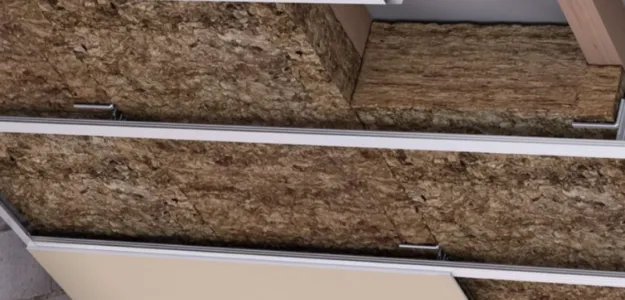1 results
What is mineral wool insulation?
Like fiberglass, mineral wool, also known as rock wool, is available in easy-to-install layers. However, instead of fluffy glass strands, the latter is made of - you guessed it - rock, which seems hard to imagine.
The natural rock is heated to around 3,000 degrees in a furnace until it melts and liquefies. The magma-like liquid is subjected to a high-pressure jet of air or steam, then spun into long fibers at very high speed. The strands are collected and compacted into dense mats, which are then cut into appropriately sized insulation blankets.
Rockwool provides thermal and acoustic insulation, and can also be used as a fire barrier between different levels of a structure.
What are the advantages of mineral wool?
Thanks to its special composition, rock wool is a highly effective insulator with the following characteristics:
Produced from natural, biodegradable materials.
Typically includes up to 75% recycled materials.
Maintains a high level of heat retention and traps air, retarding heat circulation.
Non-combustible and fire-resistant up to around 1,400 degrees
Extremely water-resistant
Superior sound-absorbing qualities
Superior insulating properties compared to fiberglass
Longevity - rockwool does not disintegrate over time
Allows moisture to escape (preventing mold formation).
Dense, robust mats are friction-locked into place, eliminating the need for stapling.
What are the possible applications of mineral wool insulation?
This insulation can be placed wherever fiberglass or other forms of insulation are used, including walls, floors, ceilings, attics and crawl spaces. However, it is particularly well suited to rooms on the north side of a home, where it's coldest, and to interior spaces that need soundproofing, such as movie theaters or recording studios.
Thanks to its high fire resistance, rockwool is perfect - and often necessary - as a fire barrier between levels of a dwelling.
Rockwool is also easy to handle: the solid mats can be cut to fit perfectly using a serrated knife or handsaw. When wet, water beads and rolls off the surface without penetrating the fibers. Rockwool fibers are so firmly pressed together that it is impossible for the insulation to shift or sag, which would considerably reduce its insulating properties.
It should be noted that mineral wool insulation is only available without facing, which means it does not come with a kraft paper or foil barrier. Depending on the situation, a separate permeable membrane may be required to act as a vapour barrier.
What thickness of rock wool is needed for good insulation?
As a general rule, a rock wool thickness of at least 50 mm (2 inches) is often recommended for basic sound insulation. However, for more effective sound insulation, a greater thickness will be required. The use of 100 mm thick stone wool panels would then be suitable for more effective noise reduction. It's important to note that sound insulation depends not only on the thickness of the stone wool, but also on the quality of the installation, the density of the material, the presence of acoustic bridges and other factors such as wall types and surrounding structures.
It is therefore advisable to consult the manufacturer's specifications, and to call in a sound insulation professional for advice specific to your situation and needs.


